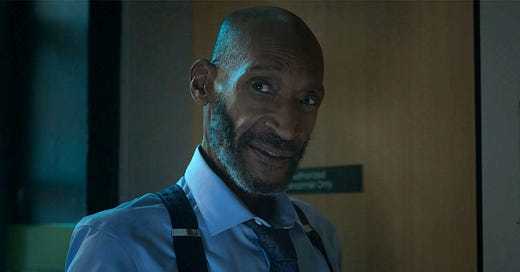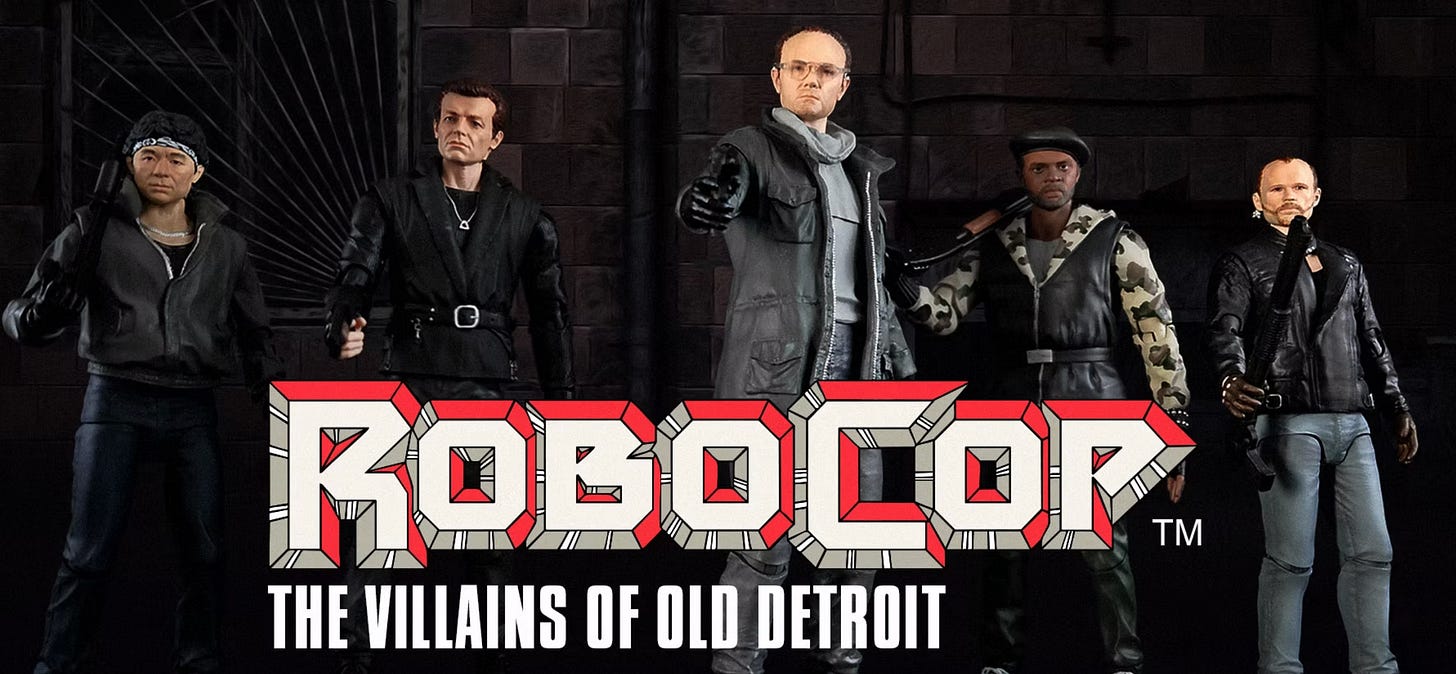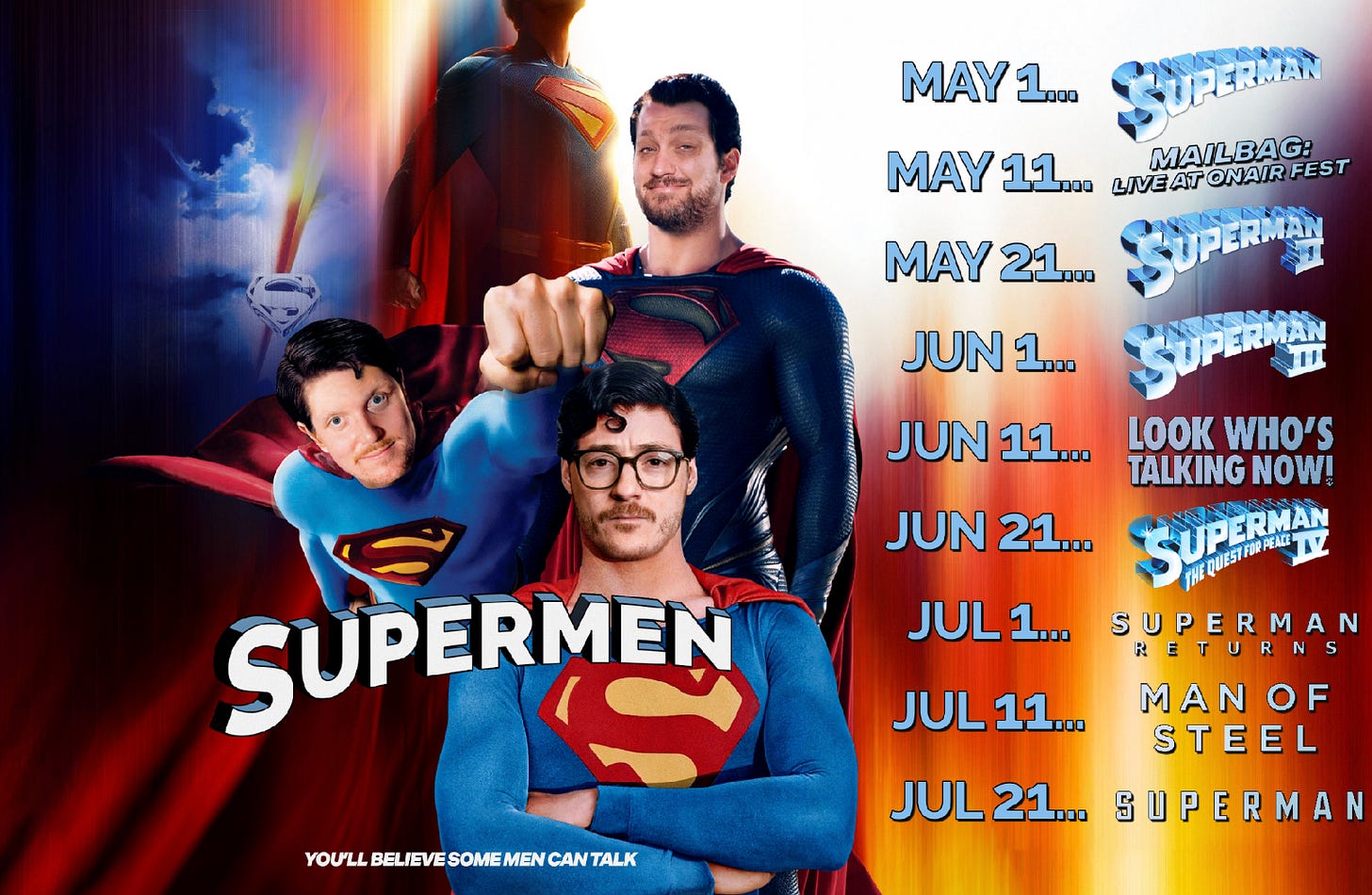Surprise! Blank Check has started a newsletter! Your favorite connoisseurs of context are gonna go on even more tangents, commit to even more bits, and share opinions on even more pieces of entertainment industry news because - hey, why not. Thanks for joining us!
IN THIS WEEK’S EDITION:
THE BARDI PARTY REPORT
Cannes is in full swing (Die My Love sounds good! Eddington sounds controversial! I need to see the Alexander Skarsgard gay BDSM movie more than I need oxygen!) but what I really wanted to talk about this week are two movies that are currently in theaters stateside and accessible to anyone with the means to go to the cinema - Friendship and Final Destination: Bloodlines.
I realized in therapy this week that I could not remember the last time I watched a movie for fun. I watch movies for this podcast. I watch movies for other podcasts I’m guesting on. I watch entire TV series for my day-job. I technically saw Sinners “for fun” but I was so stressed out about the projection quality (too dark!!!) that I missed a good chunk of it trying to find a theater employee to complain to and then obsessing over whether or not anything changed once I did. Not fun. So I resolved to visit the multiplex TWICE this weekend in hopes of getting back to a baseline level of cinematic pleasure. And, you know what? It worked! My capsule reviews (without TOO many spoilers, I think - but use caution!):
FRIENDSHIP
Are men okay? I work with men, I am married to a man, but again - are you guys okay? I keep getting served r/malelivingspace and r/malefashionadvice on my Reddit home page and watching this movie felt a lot like the strange pseudo-ethnographic curiosity activated each time I click on a “39M / recently single / what should I hang on my walls?” post. Paul Rudd and Tim Robinson play into (and against) their personas quite beautifully, and the toad-licking hallucination sequence will probably be unmatched for funniest single scene of the year. Seeing comedies in theaters is a real treat, and the boomer couple to the left of me and the millennial bros behind me both laughed heartily at times. A great sign.
FINAL DESTINATION: BLOODLINES
Speaking of great movies to see IN A THEATER - oooh baby. This was a blast. I had seen Final Destinations 1 (plane crash) and 3 (roller coaster) and assorted set pieces from all five previous entries, but you could go in blind to this one and still come out very energized and satisfied. The opening sequence is a TOUR DE FORCE - a child dies and my theater ERUPTED into cheers! Trust me, he deserved it. The new familial elements added to the lore in this installment really created a stronger emotional tone (normally it’s just like, anonymous hot 20-somethings getting whacked), and when Tony Todd showed up for his final cinematic goodbye, I was almost moved to tears. Death really DO be coming for all of us. MRI machines ARE really just giant magnets. You should NEVER drive behind a log truck. Having an anxiety disorder REALLY DOES FEEL LIKE THIS. The subway ride home from the theater really felt treacherous. FD3 ends with multiple subway deaths, btw.
LET’S CRACK OPEN THE DOSSIER
Look, folks—this is what it’s all about: a mostly forgotten but hugely successful movie to which I had no preexisting relationship that has now become the topic of almost every conversation I’ve had over the past couple months. That’s right, it’s finally time to talk about Amy Heckerling’s Look Who’s Talking, the sixth highest-grossing 1989 release at the domestic box office. As Heckerling told The Los Angeles Times upon the film’s release, the genesis of Look Who’s Talking began soon after the birth of her daughter Mollie in 1985. As babies typically do, Mollie would spend her time at dinner sitting at “the table in this baby seat and just endlessly look[ing] around.” To fill the dead air provided by their silent child, Heckerling and then-husband/Police Academy writer Neal Israel invented a game: “My husband and I started to put words in her mouth, what she might be thinking based on her expressions.” (The first example Heckerling listed was a classic: “like when the baby in [Look Who’s Talking] looks at the woman’s breasts and says, ‘Lunch!’”)1 Though Heckerling “would have liked to do edgier, crazier stuff”—like something inspired by her oft-cited favorites Mean Streets or A Clockwork Orange—a movie centered around a thinking baby “just spoke to [her].”2 But the initial spark was about more than just the idea of using the baby as a gag: if there is one primary recurring throughline in Heckerling’s filmography, it is probably her keen insight into the turbulent emotional states of young people. And while Look Who’s Talking is maybe about a much younger person than the young people featured in Fast Times or Clueless—and, if we’re being honest, much less insightful about that young person—Heckerling’s screenplay was once again sparked by her empathy with those younger than her: “I remember how I was thinking when I was three or four years old. And it is still who I am. People say, ‘Oh, I love kids.’ Which kid? It’s like saying I love people. They are separate people but they don’t know a lot of stuff yet and they have to figure it out. From the time when you are a few months old to when you turn two, you are learning more stuff and how the whole world works faster and with more information than ever in your life, which is a big burden.”3
While Mollie may have been the inspiration for Look Who’s Talking—and her fictional counterpart Mikey may have been the hook needed to attract the attention of Tri-Star Pictures and mainstream movie audiences—the film was, of course, about more than just Heckerling’s newborn child: it was also about herself: “I knew no [studio] would ever accept a movie about a woman having a baby, and all her issues. Nobody would care. ‘Oh, you’re nauseous? So what!’ But to make the film about a boy [Mikey], who’s funny and cool — that’s acceptable. That’s a way to sneak all those other issues through.”4 But Heckerling wasn’t just sneaking through issues that mothers the world over face; she was sneaking through—in hindsight, pretty blatantly—the own unique issues she was facing. In 1984, Heckerling married the aforementioned Neal Israel. As detailed in Violet Ramis Stiel’s 2018 book Ghostbuster’s Daughter, some time relatively soon after the couple’s union, Heckerling began having an affair with the writer/director/actor Harold Ramis. Ramis was also married at the time—to his first wife Anne Plotkin. But when they separated, Ramis (in Stiel’s words) claimed that Heckerling—who was “was really in love with” him—hoped that he would settle down with her, but he “knew it wouldn’t work out between” them. Plus, Ramis soon met Erica Mann, who he would marry in 1989—and to whom he would remain married until his death in 2014. But there was no clean break from this relationship: Heckerling was pregnant with Mollie, and she was unsure of whether Ramis or Israel was the biological father. Some time in the late 1980s/early 1990s, the true identity was revealed courtesy of a DNA test: it was the writer of Meatballs, and not the writer/director of Bachelor Party. But, according to Ramis—as paraphrased by Stiel—Isreal “made Amy swear never to tell Mollie but he called me, pretty pissed off, and told me.” For a long time, Ramis kept his promise to Israel: he didn’t fully share the story with his daughter Violet until 1999, and he did not meet Mollie until she was an undergraduate attending NYU.5 But for the observant watcher, the broad details of Heckerling’s relationship with Ramis were already shared via George Segal’s character Albert in Look Who’s Talking, a film that our old pal Martin Brest once described as the “most profitable private joke ever.”6 Let’s conclude this paragraph with a question: isn’t all that shit insane as hell???
But that’s not all: while Look Who’s Talking was in post-production, the film’s studio—Tri-Star Pictures—was in the midst of a very public acquisition by Sony. Though the film was scoring high in test screenings, Heckerling told The Ringer in 2017 that Sony was reluctant to release it: “Their excuse was that John Travolta was box office poison. Now, he may have been in a down period. But the guy made Grease and Saturday Night Fever, and still was as cute as ever.”7 In a recent interview with Empire magazine, however, Heckerling proposed that the high test audience scores were actually a part of the problem for the people at Sony: “But really, it was because we did so great at [test] screenings. It wouldn’t do the new people any good to say, ‘The old people made this movie, and look how well it’s doing…’” According to Heckerling, the film was taken off the release schedule, only to be saved by its two biggest stars: “John and Bruce [Willis] had made their deals based on the movie getting a wide release. As far as I know, they got together and threatened to sue the studio… and that’s when it came out. … So, it’s thanks to John and Bruce that I have my house.”8 But—as we’ll see in next week’s issue—that wasn’t the only consequential lawsuit threatened against the film Look Who’s Talking.
And here’s one last fun story, from an Olympia Dukakis Random Roles interview with The AV Club, in which the storied actress revealed that she may or may not have been paid more for the film thanks to her Oscar-winning turn in 1987’s Moonstruck: “They had hired me for [Look Who’s Talking] prior to the Academy Awards, and they said that if I got the Academy Award, they’d pay me $50,000 to do that. I remember the figure exactly. So that was my first job right after I got the Academy Award. Or maybe it was Working Girl. But I liked the director so much. Amy Heckerling, she was terrific. She didn’t do the third one, but she did the first two.”9
WHAT IS THE TEAM INTO THIS WEEK?
Griffin Newman, Host: “It took nearly forty years but SOMEONE has FINALLY stepped up to the plate and delivered the first ever action figure of Clarence Boddick, plus his entire gang of goons. They are admittedly expensive (especially with shipping & VAT costs factored in, on top of tariff worries) but this is likely a very small run coming from a very small upstart company, plus they look fucking fantastic. I placed a pre-order for the entire set the instant they went up, and am praying this line does well enough for JFSToys to tackle the OCP boardroom and Metro West precinct next!”
David Sims, Host: “Final Destination: Bloodlines - it’s the best movie I saw this week! I rec that or watching Totoro for the hundredth time but this time in the theater with your first born child”
AJ McKeon, Editor: “Muting the group chat. For all the Blankie parents out there—as we get to the end of the school year, I highly recommend muting the parent group chat. Nothing important will be shared that you can’t get elsewhere, and you’ll spare yourself the annoyance and frustration of that one parent constantly asking, “Is there homework this week?” when there hasn’t been a week without it all year!!”
JJ Bersch, Researcher: “My favorite daily puzzle website Puzzmo finally released an iOS app today!!! That site is a constant source of joy in my life!!! Their crossword editor Brooke Husic is a genius!!! Zach Gage has made so many great games!!! The art is so good and I love when the Memoku numbers turn colorful at the end of a perfect run!!! Add me as a friend, I’m jjdotbiz!!!”
Alan Smithee, Pseudonymous Editor: “I’m gonna do a double this week. I recommend James Acaster’s comedy special Cold Lasagne Hate Myself 1999, which is great. The music for that special comes from Paul Williams’s album “Surf Music,” which has been a go to summer album for me since 2022, and which I have recently started listening to again. Yes, I discovered James Acaster through Taskmaster (a shadow third rec, as if it needs it), and learned only after I fell in love with Surf Music that Paul Williams is the Taskmaster’s Assistant on Taskmaster New Zealand. Time is a flat circle, etc.”
THIS WEEK ON THE PODCAST
Hillary Busis of Vanity Fair joins us for the spermiest film we’ve ever covered as we try to get to the bottom of Look Who's Talking.
And over on Patreon, we’re cracking open the mailbag we recorded on a snowy February evening at On Air Fest. WATCH IT (that’s right, there’s video).
COMING SOON:
Los Angeles Times, October 26, 1989.
The Wrap, October 13, 2014/Roger Ebert, May 31, 2017/Empire, February 2025.
Roger Ebert, May 31, 2017.
The Ringer, February 16, 2017.

















I’m not really a podcast person. This is the first podcast I’ve really stuck with, and I do believe it has a lot to do (aside from the connoisseuring of contexts and genuinely great quality of work) with the crew of this show being my generational peers (January 1988 baby over here) and sharing so much of my experiences as a kid who was of the generation that preceded/test drove the internet. Every podcast episode is like a conversation I never got to have with people my own age, because talking about movies wasn’t really on my radar as a kid in western Kentucky in the 90s. All that to say, I used to watch Look’s Who’s Talking on television a lot as a kid. And Look Who’s Talking Now was one of the first movies I saw in theaters, alongside Beethoven’s 2nd and Honey I Blew Up The Kid (in drive in theaters).
Sorry to be a Robocop nerd, but it's Clarence BoddickER (Clarence J. Boddicker in fact - got to memorise those middle initials just in case a future pub quiz gives bonus points for them!).